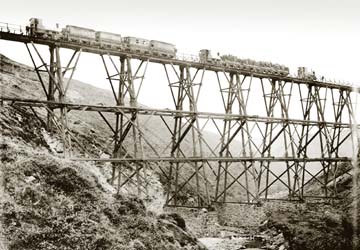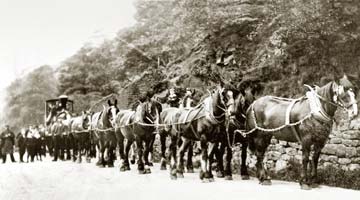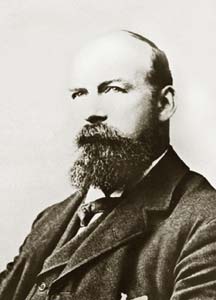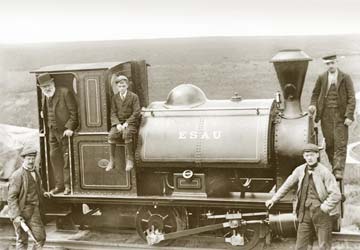|
Home Subscriptions Send us your memories Buy online Links ISSUE 8 CONTENTS "A Fearful and Dreadful Calamity" The Fire that Destroyed a Retail Gem Why Lanebottom Celebrated Twice
|
Rails to the Reservoirs When the Klondyke Came to Calder Valley By Issy Shannon Click photo to enlarge. At 105 feet high the trestle bridge carrying Blakedean railway across the valley remained a stunning spectacle for over a decade in the early years of the 20th century. Enoch Tempest commissioned architect William Henry Cockcroft and engineer George Greenwood to build the amazing bridge, 700ft long and made of pitch pine. Carriages packed with navvies on their way to work and three locomotives on the line bear witness to the confidence placed in the towering structure which withstood snow, sleet, hail and gale force winds before being demolished in 1912. Only stumps of the stone foundations now remain. Code no 131 ALGC. Click photo to enlarge Teams of horses were used to drag the locomotives up steep Heptonstall Road to the rail line at Dawson City. These exhausted animals have evidently stopped for a well-earned rest. Code No 062 ALGC. It was regarded locally as the eighth wonder of the world - a railway which, 100 years ago, ran for miles along the top of Hardcastle Crags Valley, a thousand feet above sea level. For over a decade the quiet moorland scene was disrupted by the noise of railway engines and hundreds of men engaged in constructing three new reservoirs at Walshaw Dean. Running from Whitehall Nook, Heptonstall, the 3ft-gauge Blakedean railway skirted the brow of the hill past Widdop Gate then crossed the valley on a trestle bridge, ending at the site of the reservoirs over five miles away. Several wooden bridges were constructed to cross small cloughs and valleys but - at 700 feet long and 105 feet high - the towering viaduct, designed by Hebden Bridge architect William Henry Cockcroft and built by local joiner George Greenwood, was by far the most amazing part of the entire operation.
Hebden Bridge architect William Henry Cockcroft who designed the amazing trestle bridge. He was in the first truck which crossed the bridge on May 24 1901. Reproduced by kind permission of Mrs Kathleen Iredale, Mr Cockcroft's great-granddaughter. Code no 144a. September 5 1905. "There was a sensational accident at Walshaw Dene (sic) where the reservoir is under construction. The locomotive engine Baldersdale was running along the railway track in charge of John Leech, driver, and James Taylor, stoker.All went well until reaching the gantry at the middle dock. The heavy engine then suddenly jumped the rails and fell over on its side. The stoker was pushed clear by Leech who slipped and was involved in escaping steam from the boiler, suffering injuries from which he later died." Click photo to enlarge. "Esau" was the last locomotive to arrive for work on Blakdean railway in 1904 - and the last to leave. Enoch Tempest is standing in the cab and his son, George, perches on the coal. Code no 065 ALGC.
July 22 1906. "There was serious concern when fire broke out on the well known trestle bridge at Blakedean. The outbreak was soon noticed and quickly put out. There was damage of £30. It was thought that the fire started when sparks fell from an engine onto a wooden support. The use of the bridge was held up only for one day." All that now remains of this mighty engineering feat are stumps of the stone foundations just below Blakedean, appearing for all the world like strange remnants of a prehistoric age. But they have a far more exciting - and intriguing - tale to tell....... The full, exciting story is told in the summer issue of Milltown Memories: out now. Read the full story in Milltown Memories, issue 8. If this or other stories stirs a memory, we'd be happy to know - send us your memories and comments. |




